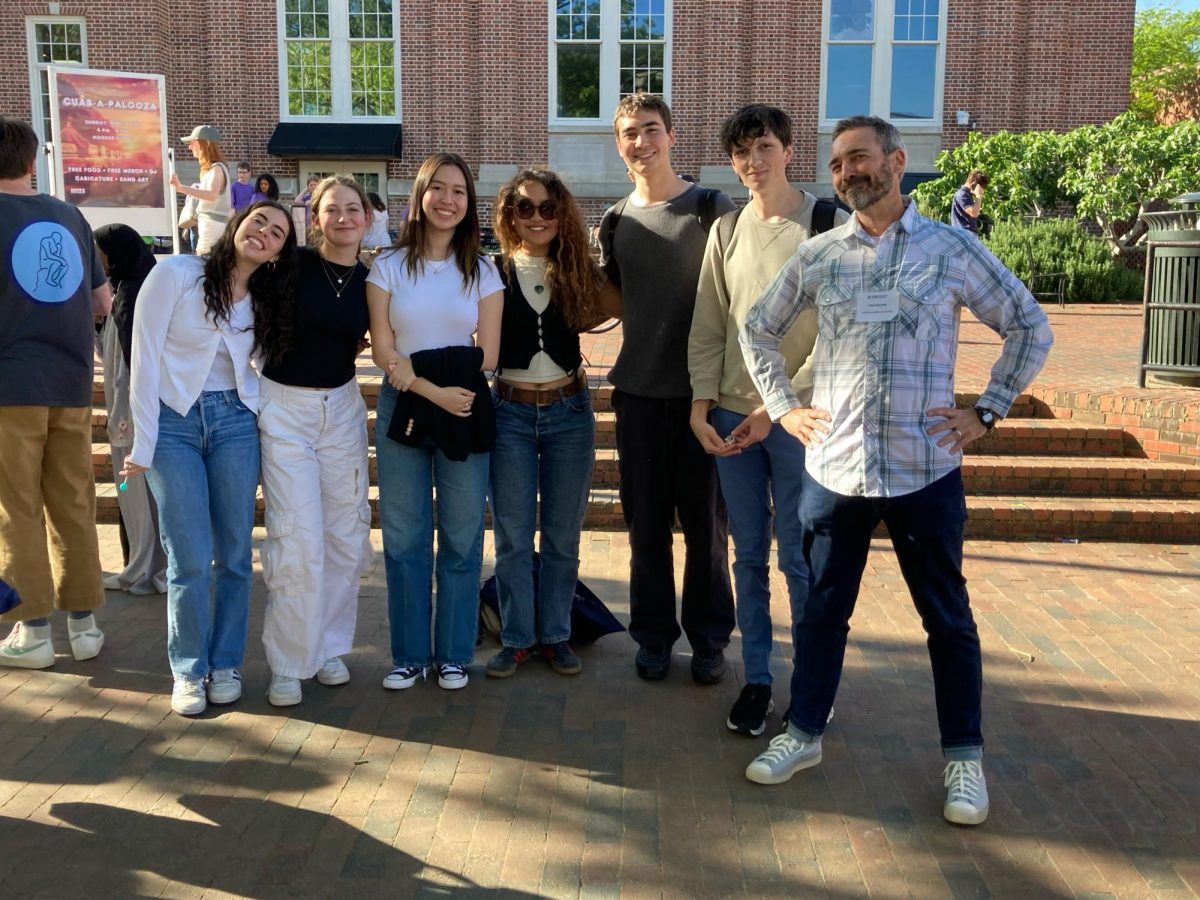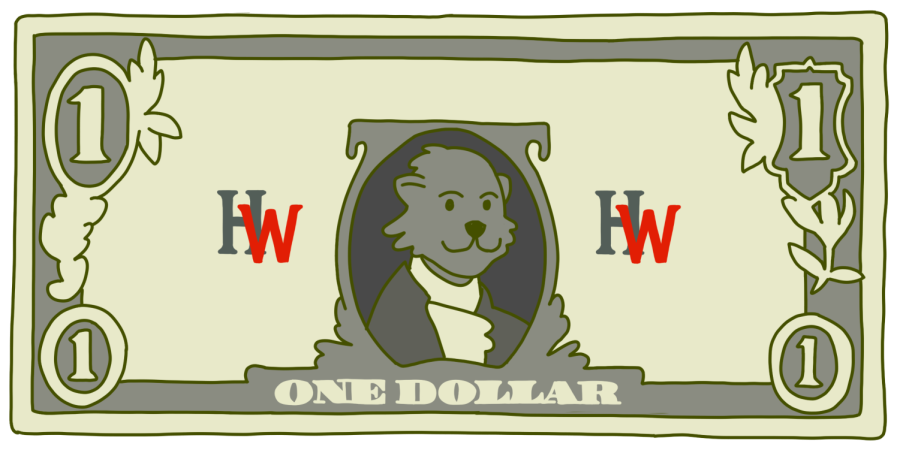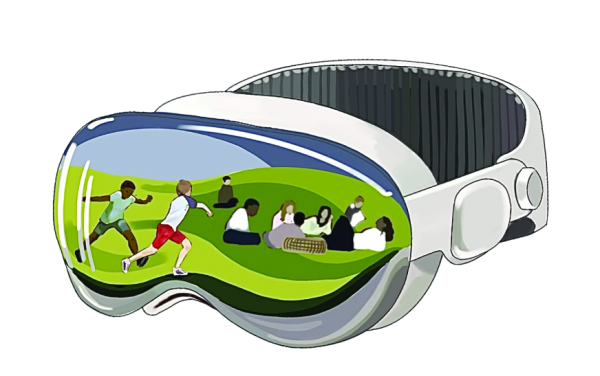Circles of Judgement
The school’s publication of Donation Circles creates a harmful system of group judgment and contradicts our core principles.
A dollar is redrawn with the school’s mascot, Buddy the Wolverine, in the center. The redrawn dollar represents how the monetary value of donations are treated as if they represent loyalty to the school.
September 29, 2022
From an outside perspective, the school is famous for one thing above all others: its staggering comparative wealth. With total assets nearing $400 million and an endowment of $148 million, it is the wealthiest preparatory school in the western U.S. by a wide margin. While much of this money comes from tuition fees, one of the most outstanding contributors is the school’s elaborate and expansive donation system, the breakdown of which they publish in detail every year in the HW Life Magazine.
The school received $49.2 million in contributions in the 2020-2021 fiscal year. Nearly the entire school community participated — 100% of faculty members gave, alongside 93% of families. These yearly donations are seen by many families as an implicit social requirement.
What the school does to “recognize” their major donors, beyond naming facilities and faculty chairs in the benefactors’ honor for especially high donations, is publish a breakdown of the donors by roughly how much they gave. The school categorizes donations in different circles, each with a higher financial barrier of entry. Circles are assigned to donations from under $1,500 on the low end to over $100,000 on the high end. This breakdown includes not just the amounts but also the donor.
The publication of this information has serious flaws. Many donors are the families of students currently enrolled in the school. The publication of the various circles and the naming of donors within them allows any member of the school community to make comparisons about how much expendable wealth is possessed and given by each family. This isn’t something that can easily be avoided by a family choosing to be anonymous on the list. With the overwhelming majority of families donating, an absence from that list could be a perceived indication that a family did not give or wanted to hide a presumably “low” amount.
This is a question of where the school’s morals lie. In publishing this data, the school subjects the community to an implicit competition. For students of such families, possible judgement awaits. The school, contrary to its popular perception, is not just a “rich kids” school: there are undoubtedly rich kids, but nearly a fifth of all students are on financial aid. For many families, extreme donations as required to be in some of the circles are simply impossible.
The school absolutely should publish a list of people who donated in order to recognize the contributions of an extremely supportive community. But what needs to be left behind is the classification of these donations by the amount given; it implies that donors who give less are less valued in the school community, disregarding the inevitably complicated and individualized reasons for the donation amount. Whether it is $100 or $100,000, the school should take that money graciously and recognize that whoever the donor is is likely giving what makes sense for them, instead of creating a system of group judgement to guilt them.












































